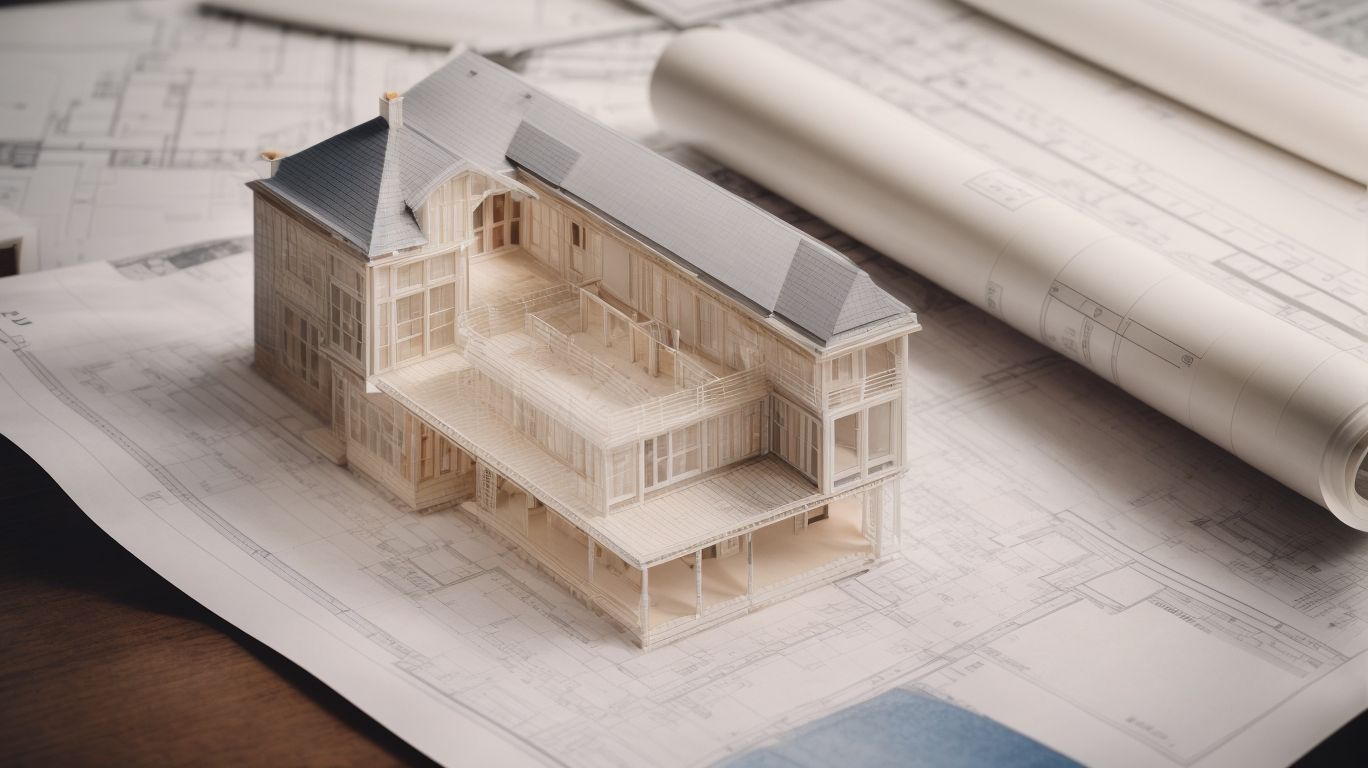
A Guide to San Francisco’s Building Codes and Regulations
Building codes and regulations are essential for maintaining safety, health, and welfare in any city, and San Francisco is no exception.
In this comprehensive guide, we will explore the different types of building codes and regulations in San Francisco, including zoning, fire, electrical, plumbing, mechanical, and energy codes.
We will also discuss how these regulations are enforced, the consequences of non-compliance, and how you can stay updated on any changes.
Whether you’re a homeowner, developer, or simply curious about city regulations, this article has something for everyone.
So, let’s dive in and unravel the complexities of building codes and regulations in San Francisco.
What Are Building Codes and Regulations?
Building codes and regulations in San Francisco encompass a set of standards and guidelines that govern the construction, alteration, and maintenance of buildings and structures within the city.
Codes and regulations are essential for ensuring the structural integrity, safety, and compliance of buildings. They address design, materials, construction methods, and occupancy limits. Compliance is crucial for safeguarding against hazards, promoting fire safety, and ensuring accessibility for all individuals.
Strict adherence to these standards allows construction projects to meet safety benchmarks and contribute to the resilience and sustainability of the built environment.
Why Are Building Codes and Regulations Important in San Francisco?
Building codes and regulations hold immense significance in San Francisco due to the city’s unique requirements for ADA compliance, fire safety, earthquake retrofitting, and energy-efficient construction practices.
San Francisco’s building codes play a crucial role in ensuring the safety and accessibility of buildings. This is especially important due to the city’s proximity to major fault lines, which raises concerns about seismic safety.
In addition to addressing safety concerns, the building codes also prioritize environmental sustainability. They promote the use of energy-efficient practices and materials to reduce the environmental impact of construction.
By integrating these specific local needs into the building codes, San Francisco aims to create spaces that are not only safe and inclusive, but also environmentally conscious. This aligns with the city’s commitment to progressive urban development.
What Are the Different Types of Building Codes and Regulations in San Francisco?
San Francisco’s building codes and regulations encompass various categories, including zoning codes, fire codes, electrical codes, plumbing codes, mechanical codes, and energy codes, each serving distinct purposes within the construction framework.
Zoning codes in San Francisco dictate how different areas of the city can be developed, ensuring that buildings and land use are in line with the city’s overall development plan.
Meanwhile, fire codes are designed to safeguard structures from potential fire hazards, with strict guidelines on fire prevention and safety measures.
Electrical codes outline the proper installation and use of electrical systems, ensuring safety and compliance with industry standards.
Plumbing codes govern the design and installation of plumbing systems, while mechanical codes dictate standards for HVAC systems.
Energy codes promote energy efficiency in all new construction and major renovations, aligning with the city’s sustainability efforts.
Zoning Codes
Zoning codes in San Francisco are established by the local government to regulate land use, designate permissible land activities, and manage development projects within specific areas of the city.
Zoning codes have a significant impact on the layout of a city, as they dictate where different types of properties can be located, such as residential, commercial, and industrial. These regulations also play a crucial role in urban planning, with the goal of creating cohesive and functional neighborhoods. They determine the height and density of buildings, the allocation of open spaces, and the preservation of historical landmarks. By overseeing these factors, the local government strives to achieve a balance between economic development, environmental sustainability, and community well-being, ultimately shaping the growth and character of the city.
Fire Codes
Fire codes in San Francisco are designed to ensure the use of fire-resistant building materials, implement safety measures, and enforce strict code compliance to mitigate fire hazards and enhance building safety standards.
Building codes play a crucial role in determining the materials used for construction. This includes a focus on fire-resistant options such as flame-retardant timber, fire-rated glass, and non-combustible cladding.
Additionally, these codes dictate fire safety protocols within buildings, including emergency exits, fire extinguisher placement, and smoke detection systems. Code enforcement measures are in place to ensure that these standards are followed, providing buildings with the necessary tools to handle fire incidents and protect occupants.
Electrical Codes
Electrical codes in San Francisco govern the installation, maintenance, and use of electrical systems. This includes requiring permits, inspections, and strict compliance to ensure the safety and functionality of electrical components within buildings.
Codes are crucial for managing permits for new electrical installations or modifications. They detail the necessary steps for inspections to ensure that installations meet safety and quality standards. Compliance with these codes is essential to mitigate electrical hazards and preserve the integrity of electrical systems.
These codes also include guidelines for wiring, grounding, and circuit protection, promoting a safer environment and preventing electrical faults that could result in fires or accidents. As such, it is imperative to understand and adhere to these electrical codes to maintain a secure and dependable electrical infrastructure in San Francisco.
Plumbing Codes
Plumbing codes in San Francisco address building violations, property maintenance standards, and regulatory requirements for plumbing installations. These codes ensure the proper functioning and maintenance of plumbing systems within structures.
Codes are essential for maintaining the safety and integrity of both residential and commercial properties. They establish the minimum requirements for plumbing infrastructure, including pipe materials, venting systems, and drainage design.
By following these codes, property owners and building managers can guarantee that their plumbing systems meet the necessary health and safety standards. The enforcement of these codes also enables prompt resolution of building violations related to plumbing problems, ultimately promoting the well-being of the community.
Mechanical Codes
Mechanical codes in San Francisco focus on ensuring the structural integrity of mechanical systems, implementing code enforcement measures, and safeguarding the operational efficiency of mechanical components within buildings.
This plays a crucial role in maintaining the safety and effectiveness of various mechanical systems, such as HVAC, plumbing, and elevators.
The regulations set forth by the mechanical codes ensure that these systems meet specific standards for performance, material usage, and installation, ultimately contributing to the overall structural stability and safety of buildings. These codes also address issues related to energy efficiency, ventilation, and fire protection, considering the holistic well-being of the building occupants and the community at large.
Energy Codes
Energy codes in San Francisco promote energy efficiency, set architectural standards, and regulate the use of energy-efficient building materials and systems to advance sustainable construction practices within the city.
In San Francisco, energy codes are essential in promoting sustainable and energy-efficient buildings and structures. They guide architects and builders in minimizing energy consumption and reducing environmental impact. By following these codes, the city can achieve lower energy costs for its residents and businesses while upholding its commitment to energy conservation and green building practices.
These codes are crucial in creating a more environmentally conscious urban landscape in San Francisco. They play a significant role in ensuring that buildings and structures are designed and constructed with a focus on sustainability, contributing to the city’s overall goal of reducing its environmental footprint.
How Are Building Codes and Regulations Enforced in San Francisco?
Enforcement of building codes and regulations in San Francisco is carried out through rigorous oversight by the building department, involving the issuance of building permits, stringent inspections, and adherence to compliance standards.
The building department plays a pivotal role in this process, ensuring that construction projects align with the established codes and regulations. Permit issuance procedures involve thorough reviews of architectural plans, structural integrity assessments, and verification of compliance with zoning laws.
Inspections are conducted at various stages of construction, with a focus on structural stability, fire safety, electrical systems, and accessibility features. These measures are in place to guarantee the safety and integrity of buildings in San Francisco, fostering a secure and sustainable urban environment.
Building Inspections
Building inspections in San Francisco are vital for code enforcement, ensuring property maintenance, and verifying compliance with building codes and regulations to uphold the safety and quality standards of structures.
Thorough inspections conducted by authorities can identify potential hazards, structural deficiencies, or violations that may compromise the safety of occupants and the surrounding community. These inspections also play a critical role in preventing issues such as fire hazards, electrical malfunctions, and inadequate structural integrity. They contribute to the overall preservation of property values and promote sustainable urban development by efficiently addressing any non-compliance issues.
Permits and Certifications
Obtaining permits and certifications in San Francisco involves navigating the regulatory framework set by the building department. This process facilitates the approval of development projects and ensures compliance with building codes and regulations.
This intricate process begins with the submission of a detailed permit application, outlining the specifics of the proposed project. The building department carefully reviews the application to ensure it aligns with zoning laws and safety standards.
Once approved, the permits grant legal authorization for construction, renovations, or alterations. They play a crucial role in regulating urban development, ensuring that structures adhere to quality and safety norms, ultimately contributing to the sustainable growth and enhancement of the city’s infrastructure.
What Are the Consequences of Not Complying with Building Codes and Regulations in San Francisco?
Non-compliance with building codes and regulations in San Francisco can lead to severe consequences, including building violations, code enforcement actions, and potential penalties or legal repercussions for non-adherence.
Building violations can range from structural deficiencies to non-permitted construction, posing safety risks to occupants and neighboring properties. Code enforcement measures may involve citations, stop-work orders, or even demolition orders for severe violations.
The potential penalties for regulatory non-adherence can encompass hefty fines, suspension of permits, and legal liabilities. It’s crucial for property owners and developers to prioritize compliance to avoid the detrimental effects of violating building codes in San Francisco.
How Can I Stay Updated on Changes to Building Codes and Regulations in San Francisco?
Staying informed about changes to building codes and regulations in San Francisco is crucial for property owners, builders, and stakeholders. Resources such as the official building codes and regulations guide serve as valuable references for compliance and updates.
Regularly checking the official San Francisco Department of Building Inspection (DBI) website for any new announcements, code amendments, or regulatory updates is crucial. It’s also beneficial to subscribe to industry newsletters and attend relevant workshops to stay informed about the ever-evolving landscape of building codes.
Being proactive and staying informed about regulatory changes is essential for ensuring that construction projects are executed in accordance with the latest standards. This promotes safety, sustainability, and legal compliance.




No Comments